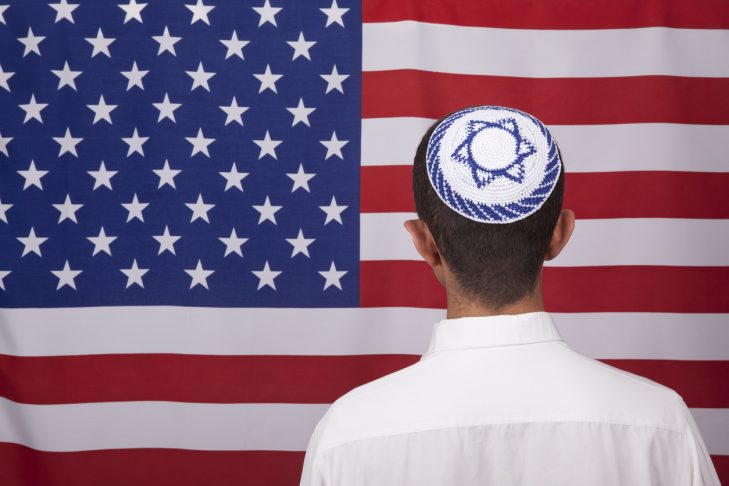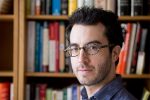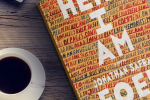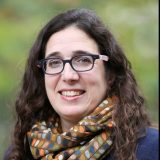Welcome back to our “Here I Am” online book club! We’ve come to Section III, “Uses of a Jewish Fist.” Catch up on previous discussion guides here.
Anyone with a hyphenated identity is primed for understanding intersectionality, a term coined by civil rights activist Kimberlé Crenshaw in 1989. Before this concept was introduced, our multiple identities were seen as tabs on a computer screen—all present, but with different ones functioning at different times. The idea of intersectionality opens us to the reality that we are each one at all times, and our various (and sometimes competing) identities play a collaborative role in creating who we are.
The opening of Section III places us in the heart of the identity debate. On the way to the airport to pick up their Israeli cousins, Jacob and Irv argue about identity and anti-Semitism. Speaking about the Jan. 2015 attack on the Hyper Cacher kosher market in Paris, Jacob paraphrases the French prime minister’s response to the terrorism with, “Every Jew who leaves France is a piece of France that is gone.” By contrast, Irv is convinced the only place where Jews can safely be at home is in a place without hyphenated identity. As soon as you enter a world that sees you as “other,” the wolves are at the door.
-
The return of the anti-Semitism we have watched expand across Western Europe and arrive at our doorstep—literally, with bomb threats to the JCCs of Greater Boston last month—tugs at our multiple identities, yet such moments tie us closely to our identity as Jews. More complex might be our feelings around the court ruling in Germany that affirmed a 2014 synagogue burning was not anti-Semitic, but anti-Israel, and thus an expression of free speech. Is there a distinction we can draw between being anti-Semitic and anti-Israel? At what point does “freedom of speech” cross the line into hate?
It depends on whom you ask. If you ask Jacob and Irv, you’ll get two opposing viewpoints, a pretty fair reflection of the reality within the American Jewish community. We are a community made up of individuals who are loyal to an innumerable list of identities. Sometimes who we are (or who we feel ourselves to be) is crystal clear; at other moments, the lines demarcating our identities are far more faded. It’s not that we are betraying one identity or another, but few things fit into precise boxes—identity chief among the ones that do not.
Generational differences often play a role in conflicting identities. Jacob’s reluctance to become “nuanced with his anvil of a father” characterizes the distance between them on this issue. Conflict happens in the other direction, as well. Jacob’s insistence on Sam’s celebration of becoming a bar mitzvah stands in opposition to Sam feeling the entire endeavor is irrelevant. Most surprising is the way the conflict plays out within Jacob himself. He ruminates on the relationship between parenting and the bar mitzvah celebration: “…Jewish Americans…will go to any length, short of practicing Judaism, to instill a Jewish identity in their children.” Yet at the same time, he looks back on his own celebration as “a bar mitzvah he didn’t want.”
As this section of the book comes to a close, identities will stand in stark relief against global and personal tragedies. A 7.6 magnitude earthquake in Israel and the death of Jacob’s grandfather will up the ante of these internal conflicts. How will the family survive?
Jonathan Safran Foer has drawn us into a fable that illustrates many of the concerns we have in our own lives. When do you feel like you’re pulled in multiple directions? Which of your selves rushes to the fore in times of crisis? How do you think Jacob will respond to the crises at hand? Share your thoughts below!
Glossary of References
Have questions about any of the terms or references used in the book? Please let us know in the comments. Here are three references from Section III you may have wondered about:
“Somewhere in my youth, or childhood, I must have done something very bad…. High on his horse was my lonely day, Irv, lay ee old lay ee old lay hee hoo.” (page 197)
Jacob is riffing on “Something Good” and “The Lonely Goatherd” from “The Sound of Music.”
“emet hi hasheker hatov beyoter” (page 214)
Sam and Billie originally discuss this quote on page 154. It’s translated from Hebrew as “truth is the best lie.”
“Mishkenot Sha’ananim” (page 221)
Mishkenot Sha’ananim, also known as Yemin Moshe, was the first neighborhood in Jerusalem built outside the walls of the Old City and is home to a famous windmill.
Read On with CJP’s Jewish Learning and Engagement here. And order a hardcover copy of the book here, a Kindle version here and a paperback version (coming in June) here.
Never miss the best stories and events! Get JewishBoston This Week.
This post has been contributed by a third party. The opinions, facts and any media content are presented solely by the author, and JewishBoston assumes no responsibility for them. Want to add your voice to the conversation? Publish your own post here.
MORE














